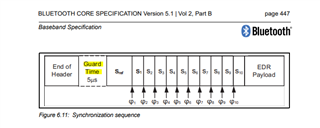Hi,
Is it necessary to keep client side connection interval of equal to or greater than 32.5ms to successfully connecting 4 devices.
as per below information
When at least one connection is already formed, in order to allow enough processing time to scan for a new connection, the minimum possible connection interval (in milliseconds) that can be used is:
12.5 + 5*n
where n is the amount of current connections.
For example, if there are currently four connections, all four connections must use a minimum connection interval of 12*5 + 5*4 = 32.5 ms in order to allow scanning to occur to establish a new connection.

I want to connect 4 devices with Connection interval of 10ms at client side but I am not able to connect 4 device successfully,
Need help in doing this Let me know how to do this ?
With TI Hardware or BLE stack is it possible to connect 4 device using simple central(Rx) and receive 1 data packet in each connection event from each peripheral in every 10ms ? i.e all 4 peripheral should send 1 data packet in every 10ms and client must receive 4 Data packet in every 10ms.
Regards,
Vidit




